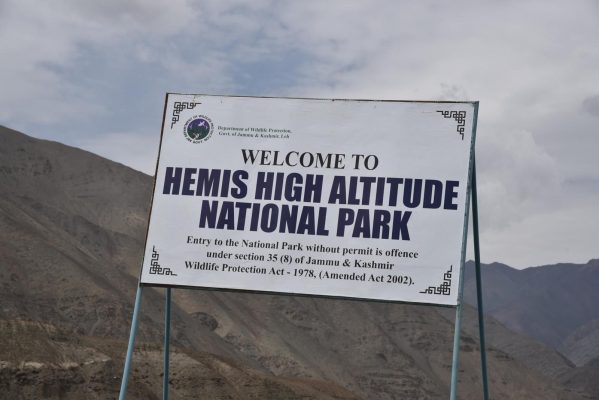Hemis National Park is a national park at a high elevation in Ladakh. It is regarded as having the largest population of snow leopards of any protected region in the world and is known across the world for them. Several endangered mammal species, including the snow leopard, can be found in the area.
Outside of the Changthang Wildlife Sanctuary, which is located northeast of Hemis, and the projected Tso Lhamo Cold Desert Conservation Territory in North Sikkim, Hemis National Park is India’s only protected area inside the Palearctic region. The catchments of Markha, Sumdah, and Rumbak, as well as a portion of the Zanskar Range, are included in the park, which is bordered on the north by the banks of the Indus River.
Where is Hemis National Park located?
The National park has pine woods, alpine shrublands and meadows, and alpine tundra vegetation. It is located within the Karakoram-West Tibetan Plateau alpine steppe ecoregion. It is located in Ladakh. It is the only national park in India north of the Himalayas, the largest designated protected area in India (after the Nanda Devi Biosphere Reserve and neighboring protected areas), and the second largest contiguous protected area.
When was Hemis National Park constituted?
When the park was established in 1981, it was created to safeguard the Rumbak and Markha catchments, which cover roughly 600 square kilometers. By integrating surrounding properties, it rose to about 3,350 square kilometers in 1988, then to 4,400 square kilometers in 1990.
Flora and Fauna of Hemis National Park
This location is in the rain shadow of the Himalayas and does not receive much precipitation. Hence, dry woods of juniper, Populus – Salix forests, and subalpine dry birch – fir are present at lower altitudes. Alpine and steppe trees are mostly found here. These plants and bushes are distributed across the valley bottoms. Since the upper mountain slopes remain damp, this area is characterized by alpine vegetation including Anemone, Gentiana, Thalictrum, Lloydia, Veronica, Delphinum, Carex, and Kobresia.
The other areas of the Hemis National Park contain steppe vegetation which is dominated by Caragana, Artemisia, Stachys, and Ephedra, present along the lower river courses. A study undertaken by CP Kala reports 15 uncommon and endangered medicinal plants growing in the park, which include Acantholimon lycopodiodes, Ephedra gerardiana, Bergenia stracheyi, Ferula jaeschkeana, and Hyoscyamus niger.
The park is home to a sustainable breeding population of roughly 200 snow leopards, primarily in the Rumbak watershed area. The prey base for the apex predator in the Central Asian Highlands is predominantly sustained in Hemis by Argali (Great Tibetan Sheep), Bharal (Blue Sheep), Shapu (Ladakhi Urial), and livestock. A tiny population of the Asiatic ibex is also present in Hemis. Hemis is the only refuge in India housing the Shapu. In addition to the Tibetan wolf, the endangered Eurasian brown bear, and the red fox, Hemis is home to the Tibetan wolf. Small mammals in the Himalayas include the Himalayan marmot, mountain weasel, and Himalayan mouse hare.
Himalayan and Trans-Himalayan raptors, such as the golden eagle, lammergeier vulture, and Himalayan griffon vulture, are among the birds of prey listed here. The Rumbak Valley offers chances for birdwatching, including numerous Tibetan species not frequent in other parts of India. Birds present here include brown accentor, robin accentor, leaf Tickell’s warbler, streaked rosefinch, black-winged snow finch, chukar, swift, red-billed Blyth’s chough, Himalayan snowcock, and the fire-fronted serin. 16 mammal species and 73 bird species have been reported in the park so far.

